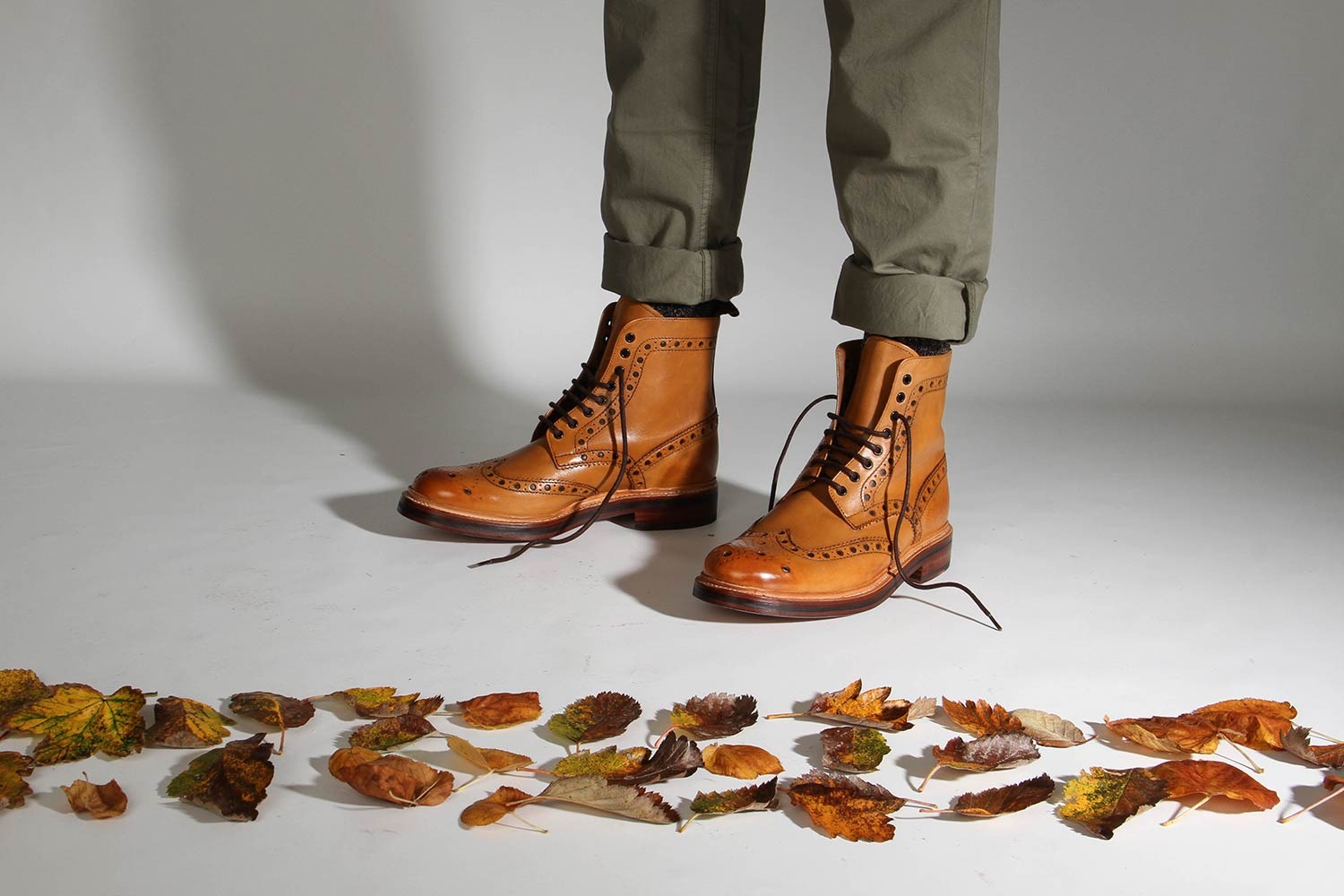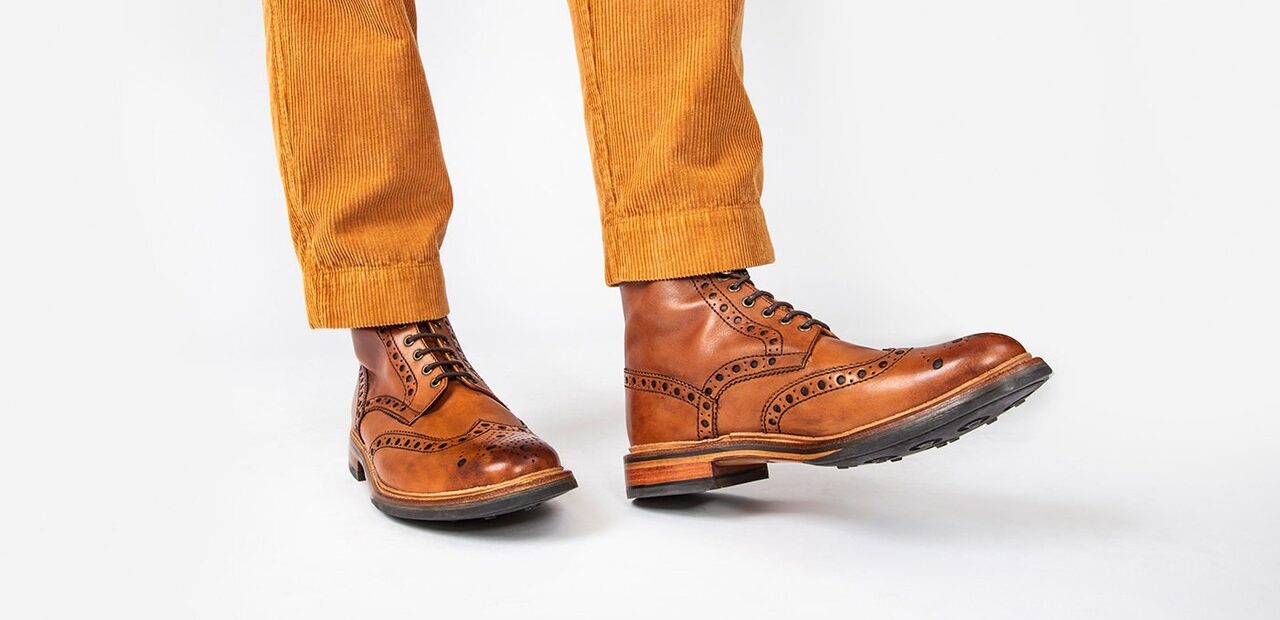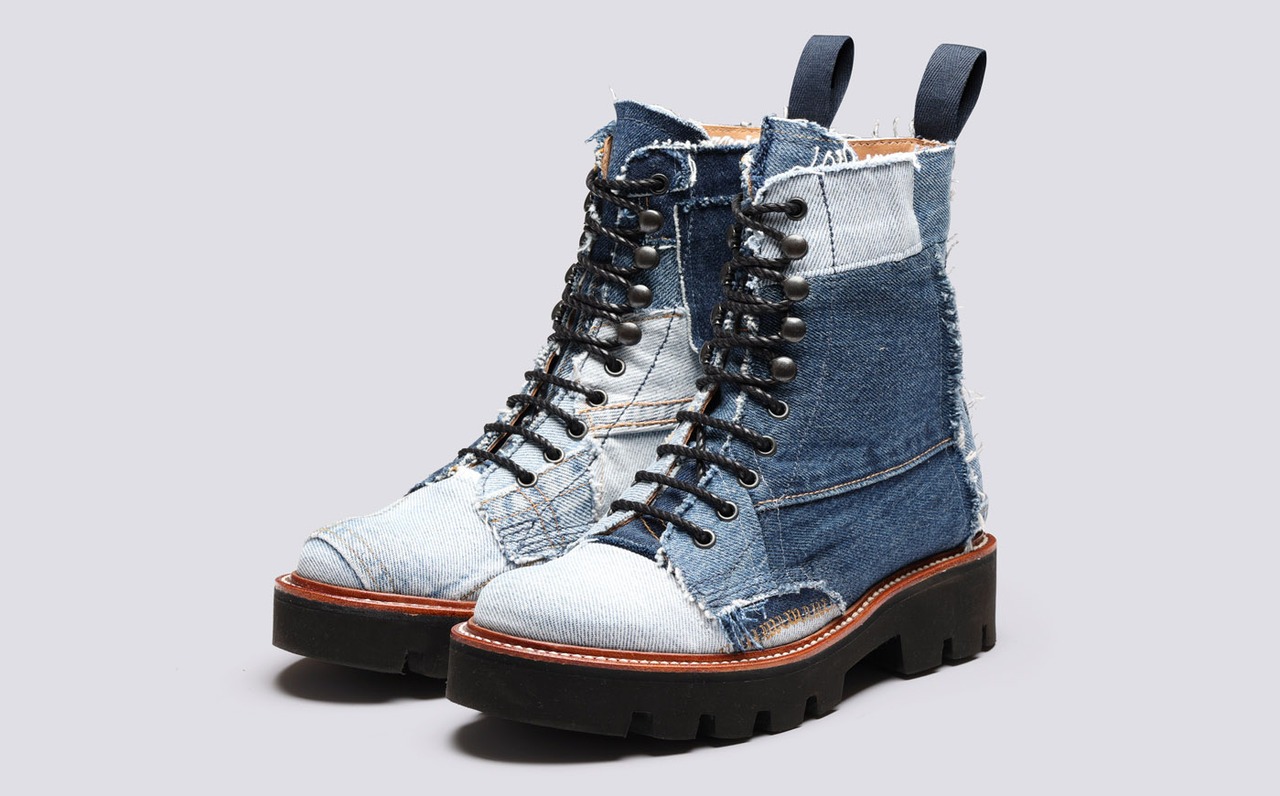Grenson is a British footwear brand that has been producing high-quality, handmade shoes for over 150 years. The brand was founded in 1866 by William Green, and since then it has become known for its innovative designs and exceptional craftsmanship. Grenson is particularly famous for its Goodyear Welted shoes, which are constructed using a process that makes them extremely durable and long-lasting.

Grenson’s shoes have been worn by everyone from soldiers to royalty, and the brand has become a staple in the world of high-end footwear. In recent years, Grenson has expanded its offerings beyond traditional men’s shoes to include women’s shoes, sneakers, and even clothing.
Grenson prides itself on its commitment to traditional craftsmanship and ethical manufacturing practices. The brand’s shoes are made by skilled craftsmen in its factory in Northamptonshire, England, using only the finest materials. Grenson also takes care to source its materials responsibly and minimize its impact on the environment.
Overall, Grenson is a brand that embodies the best of British craftsmanship and heritage. Its shoes are timeless, stylish, and built to last, and its commitment to ethical manufacturing makes it a leader in the world of sustainable fashion.
Introduction to Grenson’s commitment to materials quality and sustainability
Grenson is a British footwear brand known for its quality craftsmanship and commitment to sustainable production. Grenson is dedicated to using the highest quality materials and production methods to create footwear that is not only durable and long-lasting but also environmentally responsible.
In this article, we will explore Grenson’s commitment to using sustainable materials and production methods to create high-quality footwear. We will look at the materials that Grenson uses, their sourcing practices, and the steps they take to minimize their environmental impact.
Grenson’s focus on leather: Sourcing, processing, and quality control
Grenson places a significant emphasis on using high-quality leather in its footwear production. The brand sources its leather from reputable tanneries, which use responsible and sustainable practices in the treatment of the material.
Grenson also uses a variety of leather types, including calf leather, suede, and nubuck, to create different textures and finishes for their shoes. The leather is carefully processed to maintain its natural qualities and beauty, such as its grain and color.
In addition, Grenson ensures that its leather is of the highest quality by conducting rigorous quality control checks throughout the production process. This ensures that the leather is free from defects and will last for a long time, even with regular use.
Other materials used by Grenson: From natural fibers to synthetic materials
Grenson is known for its high-quality leather shoes, but the brand also uses a variety of other materials in its production processes. For example, Grenson uses natural fibers such as cotton and wool to make its linings, which provide warmth and comfort to the wearer. The brand also incorporates synthetic materials like nylon and neoprene, which can add durability and flexibility to the shoes.

In recent years, Grenson has started to explore more sustainable materials as well. For example, the brand has developed a new leather tanning process called “Chrome VI-free” that eliminates harmful chemicals from the production process. Additionally, Grenson has experimented with recycled materials, such as plastic bottles, to create new textiles for its shoes.
Overall, Grenson’s commitment to using a variety of materials and exploring sustainable options highlights the brand’s dedication to producing high-quality footwear that is both durable and environmentally responsible.
Grenson’s sustainability efforts: Reducing waste and carbon footprint
Grenson has made a concerted effort in recent years to reduce its environmental impact and increase sustainability. One of the ways the company has done this is by implementing a “circular approach” to production, in which waste is minimized at every step of the process. For example, Grenson has reduced its leather waste by using more of the hides it purchases and by donating scrap leather to art schools and other organizations.
In addition to reducing waste, Grenson has also focused on reducing its carbon footprint. The company has switched to using renewable energy in its factories and offices, and it has implemented energy-efficient practices to reduce overall energy use. Grenson has also made efforts to source materials more sustainably, including using leather that is a byproduct of the food industry rather than using leather from animals specifically raised for their skins.
Grenson has also launched a “repair and recraft” program, which encourages customers to bring in their worn-out shoes to be repaired or even fully recrafted, extending the life of the product and reducing waste. Overall, Grenson’s sustainability efforts have earned the company recognition from organizations such as Positive Luxury, which awarded Grenson its Butterfly Mark for sustainability in 2019.
Collaborations with Grenson: Brands working with Grenson’s materials to create new products
Introduction:
Grenson, a British footwear brand, is known for its commitment to quality materials and sustainability in production. The brand has collaborated with other companies to create unique products that reflect their values and use of premium materials. Here are some collaborations that Grenson has engaged in:
- New Balance x Grenson: In 2020, Grenson collaborated with New Balance to create a limited-edition sneaker. The shoe featured a leather upper, a Vibram sole, and a unique color scheme. This collaboration combined Grenson’s expertise in leather craftsmanship with New Balance’s athletic shoe design.
- Grenson x House of Holland: Grenson worked with the fashion brand House of Holland to create a unique boot design. The boots featured a chunky platform sole and a colorful, floral upper made from leather and suede. This collaboration combined Grenson’s commitment to quality materials with House of Holland’s playful and bold aesthetic.
- Grenson x Craig Green: In 2019, Grenson collaborated with the designer Craig Green to create a collection of footwear. The shoes featured intricate woven leather uppers and bold color combinations. This collaboration showcased Grenson’s dedication to craftsmanship and Green’s innovative design style.
- Grenson x Perks and Mini: Grenson teamed up with the Australian fashion brand Perks and Mini to create a collection of shoes. The shoes featured unique color combinations and textures, such as pony hair and embossed leather. This collaboration brought together Grenson’s expertise in traditional leatherwork with Perks and Mini’s experimental fashion vision.
Overall, Grenson’s collaborations reflect the brand’s commitment to quality materials and innovative design. By partnering with other companies, Grenson has been able to expand its product offerings while staying true to its values.

Conclusion
In conclusion, Grenson’s commitment to materials quality and sustainability has been a driving force behind its success as a footwear brand. The company’s focus on using high-quality leather, as well as exploring alternative materials, has allowed them to produce products that are not only stylish but also long-lasting. Additionally, Grenson’s efforts to reduce waste and their carbon footprint through sustainable practices have shown a dedication to creating a better future for the environment. The brand’s collaborations with other companies using their materials have also been successful, showcasing the versatility and desirability of Grenson’s materials in various products. Grenson’s commitment to quality and sustainability is sure to continue shaping the future of the footwear industry.



